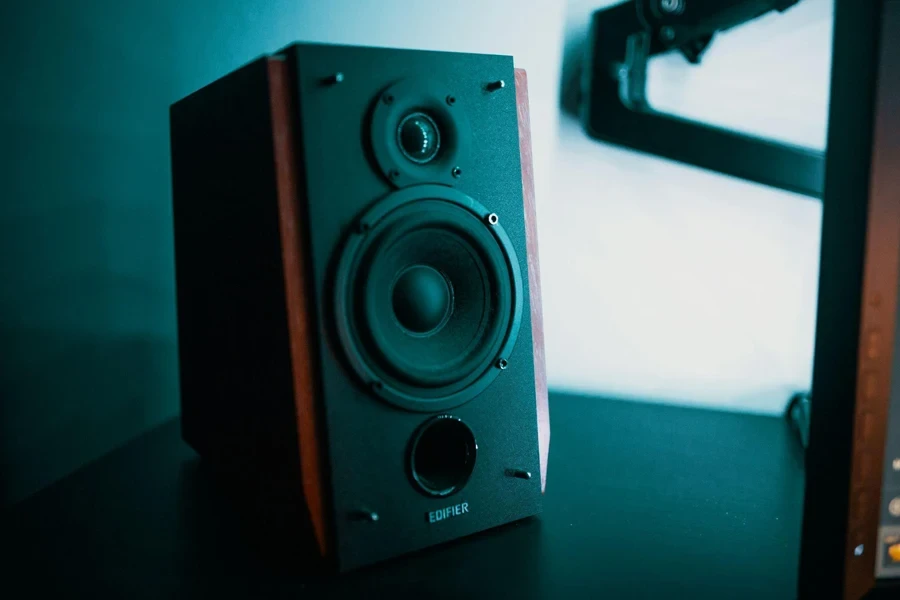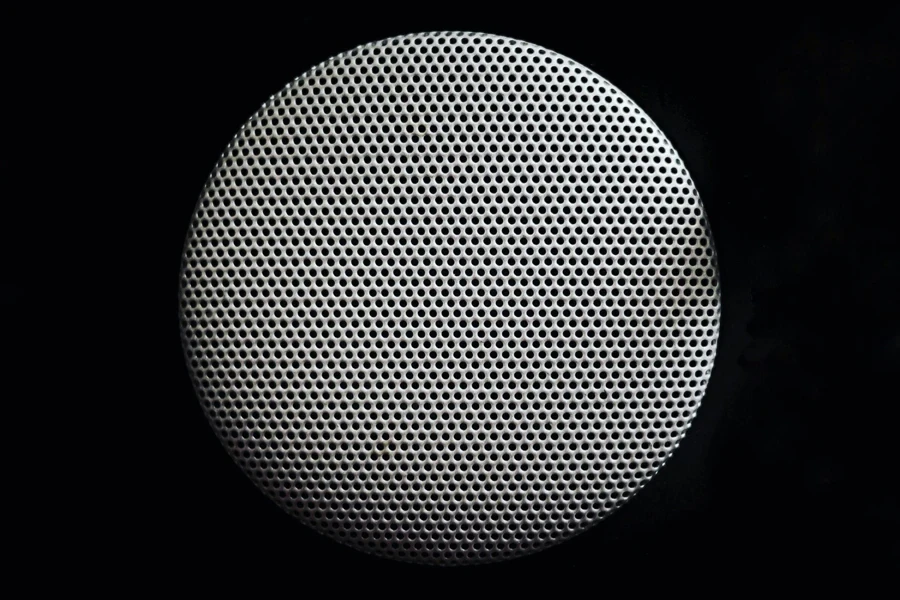Table of Contents
● Introduction
● Market overview
● Things to consider when selecting smart speakers
● Uses of smart speakers
● Conclusion
Introduction
Smart speakers have swiftly transitioned from novel gadgets to essential components of our daily lives, permeating both home and professional environments with their advanced capabilities. Initially popularized by major tech companies for their ability to stream music and provide weather updates, these devices now play a pivotal role in managing smart homes and enhancing business operations. The integration of voice-activated technology allows for seamless control of other smart devices, offering both convenience and efficiency. In professional settings, smart speakers enhance customer interactions and streamline business processes through voice commands. As these devices evolve, their impact on our interaction with technology and its integration into our living and working spaces continues to grow.

Market overview
The smart speaker market has been experiencing rapid expansion, a trend that closely mirrors the broader adoption of smart technologies in daily living. According to Statista, by 2024, the market is projected to achieve a significant revenue milestone of 20 billion USD, with sales volumes anticipated to hit 227.5 million units. This substantial growth can be attributed to several factors, including the increasing prevalence of smart home systems, which integrate various household devices via central hubs like smart speakers. Additionally, there is a growing consumer demand for technologies that not only enhance home convenience but also facilitate seamless connectivity between different digital devices and services within the living environment.
Further influencing these market dynamics is the robust Compound Annual Growth Rate (CAGR) of 18.2% projected from 2023 to 2031, as detailed by Astute Analytica. This impressive growth rate highlights the profound impact that continuous technological advancements in artificial intelligence (AI) and natural language processing (NLP) are having on the sector. These technologies are central to improving the functional capabilities of smart speakers, enhancing their ability to understand and process natural human language and to interact in increasingly sophisticated ways with users. As a result, smart speakers are not only becoming more responsive and intuitive. Still, they are also enhancing user experiences, thereby maintaining strong market momentum and solidifying their position as a staple in the consumer electronics landscape.

Things to consider when selecting smart speakers
Sound quality
Sound quality is a critical factor when selecting a smart speaker, as it significantly influences the enjoyment of audio content. For enthusiasts of music genres like hip-hop and EDM, the presence of a powerful bass response and a well-calibrated woofer is crucial for delivering the deep, immersive audio experience these styles demand. Moreover, the ability to handle high volume levels without distortion is important for maintaining clarity and detail in the sound. Speakers equipped with advanced audio processing technologies can also enhance the dynamic range and richness of the sound, making every listening session more engaging. The integration of voice command technology, highlighted by Leighton Media, further adds to the utility of smart speakers, allowing users to control playback and access various services hands-free, which is a boon for convenience and accessibility.
Design
The design of a smart speaker plays a significant role in its appeal, as it needs to fit aesthetically within the chosen environment. The selection process should consider not only the size and shape of the speaker but also its color options and the materials used for its construction, which contribute to its overall look and feel. As noted by Astute Analytica, the durability of the speaker is equally important, particularly for those who plan to use their devices in multiple settings, including outdoors. Water and dust resistance features are indispensable for maintaining the speaker’s functionality and appearance over time, ensuring it can withstand various environmental conditions without damage.
Privacy
Privacy features in smart speakers are paramount for many consumers who are concerned about the security of their personal information. Modern smart speakers often come equipped with features like microphone mute switches, which allow users to disconnect the microphone physically, and end-to-end encryption, which secures data transmission to and from the cloud. These features protect against eavesdropping and unauthorized data access, providing peace of mind to users who are wary of potential privacy breaches. Implementing strict data handling and privacy protocols further reassures users that their interactions with smart speakers are confidential and secure.
Compatibility
Compatibility is essential for integrating a smart speaker into an existing smart home ecosystem. The speaker should be capable of interfacing smoothly with other smart devices in the home, such as lighting systems, thermostats, and security devices. This compatibility extends the functionality of the speaker beyond simple audio playback to become a central control point for the smart home. HubSpot emphasizes the importance of choosing speakers that support a wide range of communication protocols, ensuring they can connect and communicate effectively with various devices. This interoperability is crucial for automating and streamlining home management tasks, enhancing both the efficiency and convenience of the smart home environment.

Uses of smart speakers
Home Automation
Smart speakers are central to modern home automation, acting as hubs that connect and control a myriad of smart devices. Through simple voice commands, users can adjust lighting, regulate heating and air conditioning, or secure their homes by controlling security systems. This seamless connectivity not only provides unprecedented convenience but also enhances energy efficiency by allowing precise control over home utilities. For instance, users can set their home to warm up or cool down before they arrive or ensure all lights are off when no one is home, all without manual intervention. Additionally, the ability to monitor these settings remotely through a smartphone app, coupled with alerts from the smart speaker, ensures that homeowners can maintain peace of mind whether they are at home or away.
Personal Assistance
As personal assistants, smart speakers streamline daily management tasks by setting reminder alarms and managing calendars. They help users keep track of important dates, set alarms for appointments, and even manage detailed to-do lists. Beyond organizational help, they provide real-time updates on news, weather, and traffic, which can be crucial for planning the day’s activities. The voice-activated feature allows users to ask questions and retrieve web information without using physical devices like phones or computers, offering hands-free access to a vast pool of knowledge whenever needed. This function is particularly useful in busy home environments where multi-tasking is routine.
Entertainment
Smart speakers serve as powerful entertainment devices, capable of streaming a wide range of audio content, including music, podcasts, and radio, with simple voice commands. Users can ask for specific tracks, albums, artists, or genres, and the smart speaker responds instantly by playing the requested content. Many models are now capable of connecting with other home entertainment devices, thereby controlling TVs and other media systems to stream video content or manage a unified home theater system. This ability transforms the smart speaker into a central command unit for all home entertainment, providing a streamlined and user-friendly experience for the whole family.
Accessibility Features
For individuals with mobility challenges or disabilities, smart speakers dramatically enhance independence and interaction with technology. They allow users to perform a variety of tasks hands-free, such as making phone calls, sending text messages, or reading aloud text from emails or web pages. This capability is invaluable for users with visual impairments or those who cannot physically interact with touchscreen devices. Continuous advancements in voice recognition technology have significantly improved the responsiveness and accuracy of smart speakers, making them more reliable aids for people needing assistance with daily tasks. As this technology evolves, it continues to break down barriers, offering greater autonomy and accessibility for a diverse user base.
Conclusion
When choosing a smart speaker, it is crucial to consider factors such as sound quality, design, privacy, and compatibility. These elements not only determine the user’s immediate satisfaction with the product but also its long-term utility in their daily life and integration into their smart home ecosystem. High-quality sound enhances entertainment experiences, while a well-designed speaker complements the home decor and proves durable under various environmental conditions. Privacy features safeguard user data, an essential aspect in today’s digitally interconnected world. Additionally, compatibility with other smart devices ensures that the speaker can serve as a central hub in the smart home, facilitating seamless interaction and automation of routine tasks, which can significantly boost productivity in both personal and business contexts. Looking ahead, the future of smart speaker technology appears poised for further innovation, particularly in areas like enhanced AI capabilities, improved natural language understanding, and broader interoperability with emerging smart home technologies. As these devices become more integrated into various aspects of daily living, they will continue to evolve from voice-activated assistants to proactive personal aides capable of anticipating user needs and preferences.




